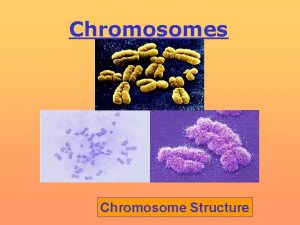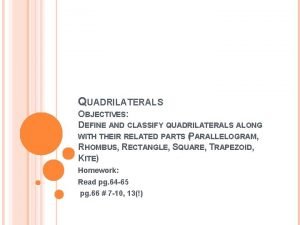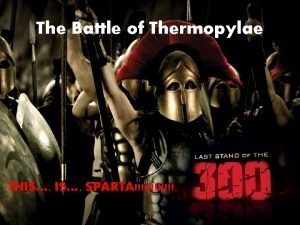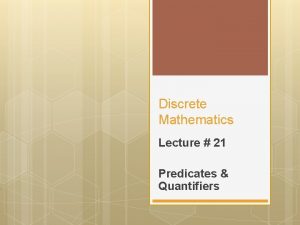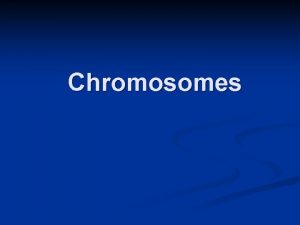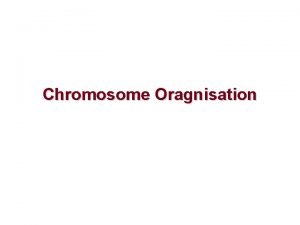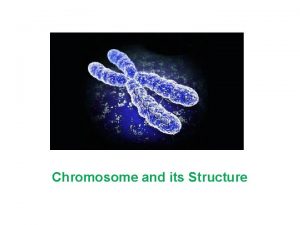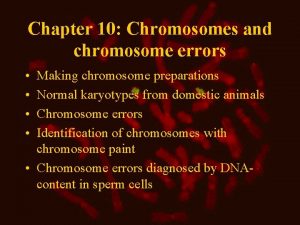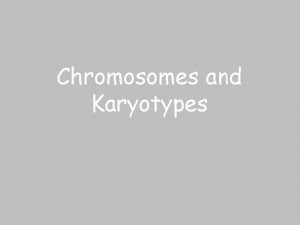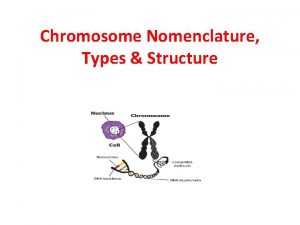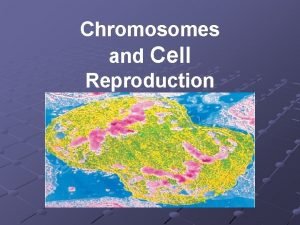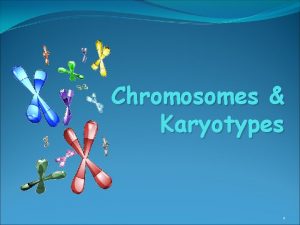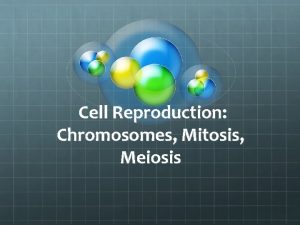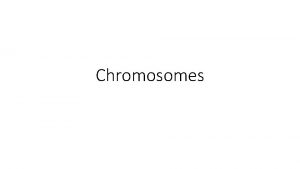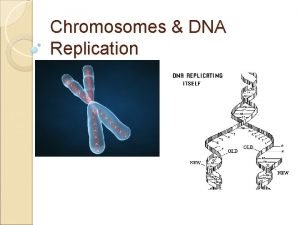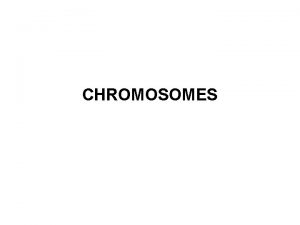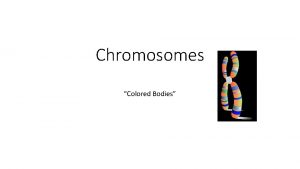CHROMOSOMES What Exactly is a Chromosome Chromosomes are
















- Slides: 16

CHROMOSOMES

What Exactly is a Chromosome? • Chromosomes are the rod-shaped, filamentous bodies present in the nucleus, which become visible during cell division. (Chromosome are not visible in active nucleus due to their high water content) • They are the carriers of your genes.

• Chromosomes are composed of thin threads called chromatin fibers. • These fibers undergo folding, coiling and supercoiling during prophase so that the chromosomes become progressively thicker and smaller. • https: //www. youtube. com/watch? v=ts. VHWb. Xqum 8



The coiling of chromosomes • https: //www. youtube. com/watch? v=gb. SIBh. Fw. Q 4 s

Chromosomes in eukaryotes and prokaryotes are different PROKARYOTES EUKARYOTES single chromosome plus plasmids many chromosomes circular chromosome linear chromosomes made only of DNA made of chromatin, a nucleoprotein (DNA coiled around histone proteins) found in cytoplasm found in a nucleus copies its chromosome and divides copies chromosomes, then the immediately afterwards cell grows, then goes through mitosis to organise chromosomes in two equal groups

Chromosomes in eukaryotes • Found in the nucleus • Condensed and visible during cell division • At the beginning of mitosis they can be seen to consist of two threads (sister chromatids) joined by a centromere • The sister chromatids are identical copies • During mitosis the sister chromatids separate and are placed into two nuclei

Numbers of chromosomes • Constant for each cell in the body (except sex cells which only have half sets). • Constant throughout the life of an individual (you don’t lose or gain chromosomes) • Constant for all members of a species

Organism Human Chromosome numbers 46 Chimpanzee 48 House Mouse 40 Maize 20 © 2007 Paul Billiet ODWS

Mouse Maize

Human chromosomes

The chromosomes of a human female

Identifying chromosomes Chromosomes can be identified by: • Their size • Their shape (the position of the centromere) • Banding patterns produced by specific stains

Chromosomes are analysed by organising them into a KARYOTYPE Female Male

Development and chromosomes • The karyotypes of males and females are not the same • Females have two large X chromosomes Males have a large X and a small Y chromosome • The X and the Y chromosomes are called sex chromosomes • The sex chromosomes are placed at the end of the karyotype • The other chromosomes are called autosomes
 Mikael ferm
Mikael ferm How to read chromosome
How to read chromosome Show that there are exactly five 3 digit cube numbers
Show that there are exactly five 3 digit cube numbers Regents
Regents Quadrilateral with one pair of parallel sides
Quadrilateral with one pair of parallel sides Money
Money Each month jessica buys exactly 15 big macs
Each month jessica buys exactly 15 big macs What exactly is a strategy
What exactly is a strategy Geometry congruent segments
Geometry congruent segments Decisive battles thermopylae
Decisive battles thermopylae A painter has exactly 32 units
A painter has exactly 32 units Triangular prism symmetry
Triangular prism symmetry What is a holy spirit
What is a holy spirit What is logistics
What is logistics Let l(x y) be the statement x loves y where the domain
Let l(x y) be the statement x loves y where the domain She is as fast as a cheetah literal or figurative
She is as fast as a cheetah literal or figurative What is job enrichment
What is job enrichment

